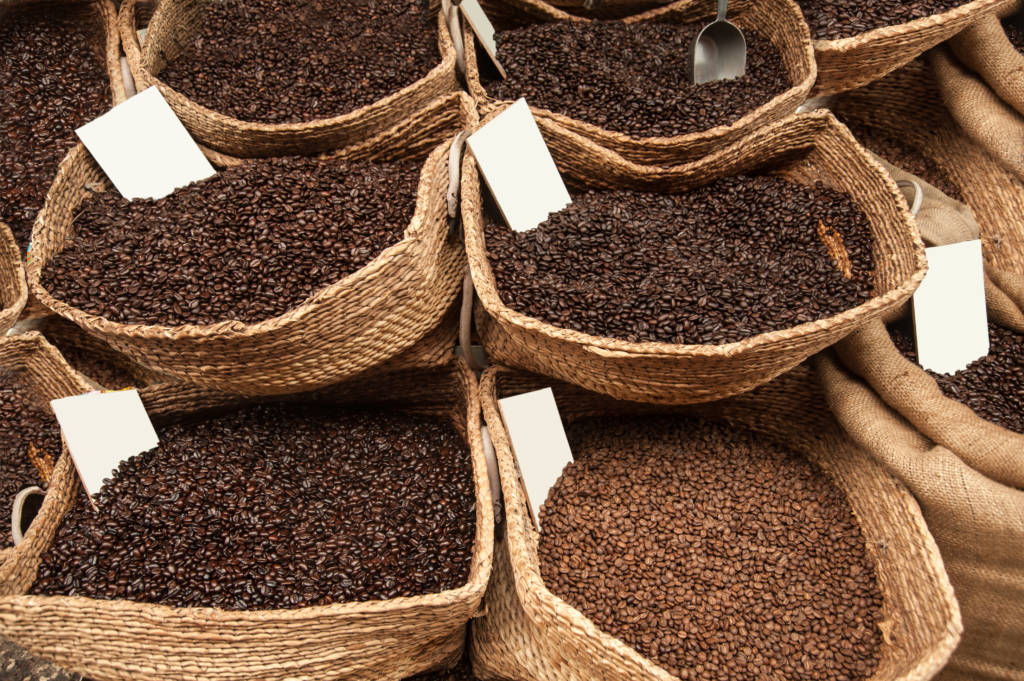Coffea Arabica and its Many Varieties
Here at CoffeeAM we offer 100% pure arabica bean coffee exclusively. But what is arabica bean coffee exactly? And what about these other names I see on your site? Well, let’s clear that up!


Coffee Species
Without getting too deep into biology and genetics, Coffea arabica (also seen as C. arabica or just arabica) is a species of coffee. Another species you may have heard of is robusta (C. canephora or Coffea canephora or even Coffea robusta). Oftentimes your store-bought coffee is a mixture of arabica and robusta. The reason for this is to reduce the cost of coffee by mixing in the less expensive robusta to stretch the quantity. Robusta is a sturdier species which can withstand harsher growing conditions, has a greater yield, and is less susceptible to pests and disease which is why it has a lower cost. It also has a higher caffeine content (almost double!) and more antioxidants than arabica. Unfortunately, robusta is extremely bitter. In addition to being used as a filler, robusta is also typically used for instant coffee as well as for some espresso. Arabica is a milder coffee but tends to be more problematic to grow as it is susceptible to diseases and pests, including coffee leaf rust and the coffee borer beetle. It takes more herbicide and pesticide to protect arabica than for robusta. Because of the smoother and milder flavor of arabica, it is more highly sought after.So, What About Those Other Coffees?
Remember your biology lessons when you had to classify things into their taxonomic ranks? Who remembers domains, kingdoms, phylums, etc? Well, species comes at the bottom of the list or is the most specific of the divisions. Well, sort of. Varieties come after species and that’s where these “other” coffees come from. Coffee varieties you may have noticed on our site include:
Blue Mountain – this is one of the most exclusive coffees. Grown in Jamaica, it can also be found in Haiti, Papua New Guinea, Kenya, and even Hawaii. It is considered a mutation of Typica (typica is just a fancy name for the base species of something).
Bourbon – originally planted on the island of Bourbon it made its way to Brazil and is now found throughout Latin America. This variety produces 20%-30% more than Typica.
Catuai – a hybrid of Mundo Novo (see below) and Caturra (see below). It began in Brazil and made its way throughout Latin America.
Caturra – developed by cultivating two natural mutations of the Bourbon variety. Caturra has a higher yield than Bourbon and is more disease resistant. It is found in Latin and Central America.
Harar – one of three varieties grown in Ethiopia with a trademark.
Gesha or Geisha – one of the highly sought after and most expensive coffees, Gesha (or Geisha) is grown in Tanzania, Costa Rica, Colombia, and Peru.
Java – this Indonesian coffee variety is from the island of Java. Yes, it is the source of coffee’s nickname Java.
Kona – grown in Hawaii, this variety is grown on the slopes of Mauna Loa and Hualalai on the Big Island.
Mocha – from Yemen, this variety got its name from the port of Mocha. It is not to be confused with the chocolaty coffee.
Mundo Novo – this variety was developed by crossing Bourbon and Typica.
Santos – less a variety, Santos is better known as a grade of coffee from Brazil. It is named for the port it shipped from and was considered a higher quality than most coffees coming from Brazil. It is usually Bourbon.
Sidamo – the second of three varieties grown in Ethiopia. Also trademarked.
Sulawesi – this is actually the variety S795 (which is considered the most common arabica grown in India and South East Asia. It is grown high in the mountains of Sulawesi, Indonesia. It is not a cultivar itself.
Sumatra Mandheling – not actually a cultivar but a location name. It is from the misheard name of the Mandailing people of Indonesia.
Timor – not exactly a variety of arabica but a hybrid of arabica and canephora (robusta). It is quite resistant to the coffee leaf rust disease.
Typica – the original arabica. This variety comes from the original Yemeni coffee.
Yirgacheffe – the third and final of three varieties grown in Ethiopia and trademarked.
Next week we’ll take a look at the difference in taste between these varieties. See you then!










